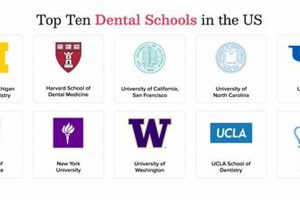Elite pre-professional training in classical dance within New York City offers aspiring dancers unparalleled access to world-renowned instructors, diverse performance opportunities, and a rich cultural landscape steeped in ballet history. These programs typically provide rigorous instruction in various techniques, including Vaganova, Balanchine, and Cecchetti, alongside supplementary training in areas such as pointe work, pas de deux, character dance, and contemporary styles. Acceptance into such institutions often involves highly competitive auditions assessing technical proficiency, artistry, and physical potential.
The concentration of high-caliber training institutions in New York City provides an environment conducive to artistic growth and networking. Students benefit from exposure to leading ballet companies, renowned choreographers, and the vibrant energy of the city’s arts scene. This proximity allows for invaluable learning experiences, including masterclasses, workshops, and the chance to observe professional dancers in rehearsals and performances. Historically, New York City has played a pivotal role in the development of American ballet, establishing itself as a center for innovation and excellence. The city’s rich legacy continues to attract aspiring dancers from around the globe seeking exceptional training and the pursuit of professional careers.
This article will explore several prominent dance academies within New York City, examining their distinct programs, faculty, performance opportunities, and overall contributions to the world of ballet. The criteria for selection include reputation, faculty expertise, alumni success, and the breadth of training offered. Each institution’s unique strengths and pedagogical approach will be highlighted to provide a comprehensive overview of the pre-professional ballet landscape in New York City.
Tips for Aspiring Ballet Dancers in New York City
Navigating the competitive landscape of pre-professional ballet training in New York City requires dedication, strategic planning, and a proactive approach. The following tips offer guidance for aspiring dancers seeking to maximize their training and pursue professional opportunities.
Tip 1: Begin Early and Consistently: Consistent, high-quality training from a young age establishes a strong technical foundation essential for success. Early exposure to various ballet styles and techniques enhances adaptability and versatility.
Tip 2: Seek Diverse Training Experiences: Supplementing regular studio classes with summer intensives, workshops, and masterclasses broadens artistic horizons and provides exposure to different pedagogical approaches.
Tip 3: Develop Comprehensive Artistry: Cultivating musicality, expressiveness, and stage presence complements technical proficiency. Exploration of other art forms, such as music and theatre, can enhance artistic development.
Tip 4: Prioritize Physical and Mental Well-being: Maintaining optimal physical health through proper nutrition, cross-training, and injury prevention is crucial. Equally important is cultivating mental resilience and coping strategies to manage the demands of rigorous training.
Tip 5: Network Strategically: Attending performances, open rehearsals, and industry events provides opportunities to connect with professionals in the field. Building relationships with teachers, choreographers, and fellow dancers can offer valuable insights and mentorship.
Tip 6: Research and Prepare for Auditions: Thorough preparation, including researching schools, refining technique, and developing audition strategies, maximizes the chances of acceptance into competitive programs.
Tip 7: Embrace Continuous Learning: A commitment to lifelong learning, self-improvement, and seeking feedback fosters growth and adaptability within the ever-evolving world of ballet.
By implementing these strategies, aspiring dancers can enhance their training, navigate the complexities of the pre-professional ballet landscape, and increase their potential for success in this demanding yet rewarding field.
The following section will conclude this exploration of pre-professional ballet training in New York City, offering final thoughts and resources for further investigation.
1. Faculty Expertise
The caliber of faculty significantly distinguishes top-tier ballet schools. Experienced and knowledgeable instructors provide essential guidance, shaping a dancer’s technical skills, artistic sensibilities, and overall development. Instructors with professional performance experience often possess invaluable insights into the demands and nuances of the professional dance world, offering students a realistic perspective and practical preparation for a career in ballet.
- Pedagogical Approach
Effective ballet pedagogy requires a nuanced understanding of both anatomical principles and artistic expression. Experienced instructors adapt their teaching methods to individual student needs, fostering optimal growth and addressing specific technical challenges. Schools prioritizing individualized instruction, such as those emphasizing smaller class sizes or offering private coaching, often yield dancers with a stronger technical foundation and a more refined artistic voice.
- Professional Experience
Faculty members with extensive professional performing experience bring a depth of practical knowledge to their teaching. They can impart invaluable insights into the realities of a professional dance career, including audition strategies, rehearsal etiquette, and performance practices. Exposure to this professional perspective provides students with a significant advantage as they transition into the competitive world of professional ballet.
- Artistic Lineage
Many esteemed ballet schools boast faculty who have trained under renowned figures in ballet history, carrying forward specific stylistic traditions and pedagogical approaches. This lineage can provide students with a direct link to established methodologies and a deeper understanding of ballet’s rich history. For instance, schools with faculty trained in the Balanchine method impart a specific aesthetic and technical approach deeply rooted in the traditions of the New York City Ballet.
- Mentorship and Guidance
Beyond technical instruction, faculty in top ballet schools often serve as mentors, guiding students in their artistic and professional development. This mentorship can encompass advice on career choices, navigating the audition process, and developing strategies for long-term success in the field. The supportive environment fostered by experienced mentors contributes significantly to a dancer’s confidence and resilience.
The collective expertise of a ballet school’s faculty directly impacts the quality of training and the potential for student success. A diverse and experienced faculty, coupled with a supportive learning environment, are hallmarks of institutions committed to nurturing the next generation of professional ballet dancers. By assessing these factors, aspiring dancers can identify programs that align with their individual goals and aspirations within the competitive world of professional ballet.
2. Training Rigor
Rigorous training distinguishes elite ballet institutions from recreational programs. Within the competitive landscape of professional ballet, especially in a hub like New York City, intensive training is crucial for developing the technical proficiency, artistic nuance, and physical resilience required for a successful career. This rigorous approach cultivates not only technical mastery but also the discipline, work ethic, and mental fortitude essential for navigating the demands of the professional dance world.
- Technical Mastery
Elite ballet schools prioritize the development of impeccable technique. This includes meticulous attention to anatomical principles, precise execution of steps, and the cultivation of a refined aesthetic. Daily classes emphasizing proper alignment, strength building, and artistic expression form the core of this rigorous approach. Schools known for their technical rigor, such as the School of American Ballet, produce dancers recognized for their precision and virtuosity.
- Physical Conditioning
The physical demands of professional ballet necessitate a high level of strength, flexibility, and stamina. Rigorous training programs incorporate cross-training activities like Pilates, swimming, and strength conditioning to enhance physical preparedness. This focus on overall physical development minimizes the risk of injury and equips dancers to handle the demanding schedules and physically taxing roles encountered in professional companies.
- Artistic Development
Beyond technical proficiency, elite ballet schools cultivate artistry through exposure to music theory, art history, and dramatic expression. This comprehensive approach fosters a deeper understanding of artistic interpretation and allows dancers to embody characters and convey emotions with depth and nuance. Opportunities to perform in diverse repertoire, including classical and contemporary works, further enhance artistic versatility.
- Disciplined Work Ethic
The rigorous environment of elite ballet training instills a strong work ethic and a commitment to continuous improvement. Long hours in the studio, demanding rehearsals, and the pursuit of technical perfection cultivate discipline, perseverance, and resilience. These qualities are essential not only for success in training but also for navigating the challenges and pressures inherent in a professional dance career.
The rigorous training programs of leading ballet schools in New York City contribute significantly to the development of well-rounded, versatile dancers capable of thriving in the competitive world of professional ballet. This intensive approach, encompassing technical mastery, physical conditioning, artistic development, and a disciplined work ethic, prepares dancers for the demands and opportunities that await them in pursuing a professional career. By prioritizing these elements, these institutions maintain their reputations as centers of excellence, attracting aspiring dancers from around the globe.
3. Performance Opportunities
Access to high-quality performance opportunities significantly distinguishes leading pre-professional ballet programs. These experiences provide invaluable practical application of studio training, fostering artistic growth, building stage presence, and offering essential exposure to the professional dance world. The frequency, caliber, and diversity of performance opportunities contribute substantially to a dancer’s overall development and preparedness for a professional career. Schools with strong connections to professional companies, such as the School of American Ballet’s affiliation with the New York City Ballet, offer unparalleled access to professional-level performance experiences. Similarly, institutions presenting regular student showcases and workshops, like the Joffrey Ballet School, provide crucial platforms for students to hone their performance skills and gain valuable stage time.
Regular performance experience allows aspiring dancers to develop crucial skills not readily attainable in the studio. These include adapting to stage environments, managing performance anxiety, interacting with other dancers in a performance context, and developing the artistry and projection necessary to captivate an audience. Furthermore, participation in diverse productions, ranging from classical ballets to contemporary works, expands a dancer’s repertoire and adaptability, crucial assets in the competitive professional landscape. Opportunities to work with professional choreographers, costume designers, and lighting technicians during these productions provide invaluable insights into the collaborative nature of professional dance-making. For instance, students performing in full-length classical ballets gain experience with complex choreography, elaborate costumes, and the intricacies of theatrical staging, while those participating in contemporary works explore innovative movement vocabularies and develop adaptability to diverse artistic styles.
Performance opportunities serve as a crucial bridge between training and professional practice. They allow dancers to demonstrate their skills, gain confidence on stage, and build a performance resume. These experiences are often essential for attracting the attention of company directors and choreographers during auditions and can significantly impact future career prospects. Moreover, the ability to perform effectively under pressure is a critical skill for professional dancers, and frequent performance experiences cultivate this resilience and adaptability. In summary, access to substantial performance opportunities, especially those offering exposure to diverse repertoire and professional production standards, is a key factor to consider when evaluating pre-professional ballet training programs. The ability to translate studio training into compelling stage performances is paramount for success in the professional dance world, and these experiences play a vital role in shaping a dancer’s artistic trajectory.
4. Institutional Reputation
Institutional reputation plays a significant role in defining the landscape of elite ballet training in New York City. A school’s reputation reflects its history, the accomplishments of its alumni, the expertise of its faculty, the rigor of its training, and its connections to professional companies. This established prestige influences not only student recruitment but also the opportunities available to graduates as they transition into professional careers. Aspiring dancers often seek institutions with strong reputations, recognizing the potential benefits for both training and career advancement. For instance, the School of American Ballet’s close ties to the New York City Ballet and its history of producing leading dancers contribute significantly to its renowned reputation. Similarly, the Juilliard School’s reputation extends beyond dance, encompassing music and drama, offering students a broader artistic network and enhanced career prospects.
The reputation of a ballet school often correlates with the success of its alumni. Institutions consistently placing graduates in prominent companies or fostering successful choreographers and artistic directors earn recognition for their effectiveness in preparing dancers for professional careers. This track record of success reinforces the school’s reputation and attracts prospective students seeking similar outcomes. Furthermore, a strong reputation can facilitate access to masterclasses, workshops, and performance opportunities with renowned artists and companies, enriching the training experience and providing valuable networking opportunities. For example, alumni networks can play a crucial role in connecting graduates with auditions, mentorship programs, and career guidance, further amplifying the benefits of attending a reputable institution. These connections can provide a crucial advantage in the competitive dance world, opening doors to opportunities not readily available elsewhere.
In summary, institutional reputation serves as a significant factor in evaluating ballet schools, particularly in a competitive environment like New York City. While rigorous training and dedicated faculty are essential, a school’s reputation significantly influences the overall quality of the training experience and the potential for future career success. The established prestige, alumni achievements, and industry connections associated with a reputable institution contribute significantly to a dancer’s professional development and long-term career prospects. Therefore, considering institutional reputation, alongside other factors like faculty expertise and performance opportunities, is essential for aspiring dancers seeking optimal training and aiming for successful careers in the professional ballet world.
5. Alumni Success
Alumni success serves as a key indicator of a ballet school’s effectiveness and contributes significantly to its overall reputation. In the competitive landscape of pre-professional ballet training, particularly in a major center like New York City, the achievements of graduates offer valuable insights into the quality of instruction, the effectiveness of the curriculum, and the school’s ability to prepare dancers for professional careers. Examining alumni careers provides prospective students and their families with concrete evidence of a program’s potential to nurture talent and launch successful careers in the demanding world of professional ballet.
- Placement in Professional Companies
The number of alumni dancing in prestigious companies worldwide directly reflects a school’s success in preparing students for professional careers. Schools boasting a high placement rate in renowned companies, such as American Ballet Theatre, New York City Ballet, and prominent international companies, demonstrate their effectiveness in developing dancers who meet the rigorous standards of the professional field. This metric offers tangible evidence of a program’s ability to cultivate technical proficiency, artistic excellence, and the professional attributes required for success at the highest levels of ballet.
- Awards and Recognition
Alumni recognition through prestigious awards, scholarships, and competition victories further validates a ballet school’s training quality. Achievements such as winning international ballet competitions, receiving coveted scholarships for further training, or being nominated for prominent dance awards highlight the caliber of talent nurtured within a particular program. These accolades not only celebrate individual achievement but also reflect the school’s commitment to fostering excellence and preparing dancers for recognition on national and international stages.
- Career Longevity and Versatility
Sustained careers in dance, encompassing diverse roles and artistic endeavors, demonstrate the comprehensive training provided by a successful ballet school. Alumni who maintain long and fulfilling careers, transitioning into roles such as principal dancers, choreographers, artistic directors, or educators, showcase the program’s ability to equip dancers with the skills and adaptability necessary for navigating the evolving landscape of the professional dance world. This longevity and versatility underscore the value of a well-rounded education that extends beyond technical proficiency to encompass artistic development and career management skills.
- Contributions to the Field
Alumni contributions to the broader field of dance, through choreography, pedagogy, or leadership roles, further enhance a school’s reputation and legacy. Graduates who become influential choreographers, establish successful dance companies, or assume leadership positions within the dance community demonstrate the lasting impact of their training and the school’s role in shaping the future of ballet. These contributions underscore the program’s effectiveness in nurturing not only skilled performers but also artistic innovators and leaders within the field.
By examining these facets of alumni success, prospective students can gain a comprehensive understanding of a ballet school’s impact on individual dancers and its contribution to the broader dance world. The achievements of alumni offer a compelling narrative of a school’s commitment to excellence, its effectiveness in preparing dancers for professional careers, and its enduring legacy within the field of ballet. In the competitive environment of pre-professional ballet training in New York City, alumni success serves as a crucial measure of a school’s quality and a powerful testament to its ability to nurture the next generation of dance artists.
Frequently Asked Questions about Elite Ballet Training in New York City
This section addresses common inquiries regarding pre-professional ballet training in New York City, providing concise and informative responses to assist prospective students and their families in navigating the complexities of this specialized field.
Question 1: What distinguishes pre-professional ballet programs from recreational dance classes?
Pre-professional programs offer significantly greater training intensity, technical rigor, and performance opportunities compared to recreational classes. They prioritize preparing students for professional careers in ballet, emphasizing technical mastery, artistic development, and physical conditioning.
Question 2: How competitive are auditions for top ballet schools in New York City?
Acceptance into elite ballet schools is highly competitive due to the limited number of available slots and the high volume of applicants. Auditions typically assess technical proficiency, physical attributes, artistic potential, and overall suitability for a demanding training environment.
Question 3: What factors should be considered when choosing a pre-professional ballet school?
Key considerations include faculty expertise, curriculum rigor, performance opportunities, institutional reputation, alumni success, and overall training philosophy. Alignment between a school’s approach and a student’s individual goals and learning style is crucial.
Question 4: What financial aid options are available for aspiring ballet dancers?
Many ballet schools offer scholarships, grants, and work-study programs to assist students with tuition and related expenses. Eligibility requirements and application procedures vary by institution.
Question 5: What is the typical daily schedule for a student in a pre-professional ballet program?
Students typically engage in several hours of daily training, including ballet technique classes, pointe work, variations, partnering, character dance, and supplementary conditioning. Schedules may also include academic studies, rehearsals, and performances.
Question 6: How important is academic education alongside pre-professional ballet training?
Maintaining a strong academic foundation is crucial for aspiring dancers. Elite ballet schools often partner with academic institutions or offer integrated academic programs to ensure students receive a well-rounded education that prepares them for diverse career paths, both within and beyond the realm of professional dance.
Careful consideration of these frequently asked questions provides valuable insights into the unique demands and opportunities associated with pre-professional ballet training in New York City. Thorough research and informed decision-making are essential for aspiring dancers seeking optimal training and striving for success in this competitive field.
This concludes the informational overview of pursuing pre-professional ballet training in New York City. We hope this comprehensive guide assists aspiring dancers in navigating the exciting and challenging journey toward a professional career in ballet.
Elite Pre-Professional Ballet Training in New York City
This exploration of New York City’s pre-professional ballet landscape has highlighted the crucial elements contributing to exceptional training. Factors such as faculty expertise, rigorous curricula, diverse performance opportunities, institutional reputation, and alumni success collectively shape the quality and effectiveness of these programs. The city’s rich history and vibrant arts scene further enrich the training experience, providing unparalleled access to professional companies, renowned choreographers, and a dynamic cultural environment. Understanding these key components allows aspiring dancers to make informed decisions in pursuit of their artistic and professional goals within the competitive world of ballet.
The pursuit of excellence in ballet demands dedication, discipline, and a commitment to lifelong learning. New York City’s pre-professional ballet institutions offer a pathway for talented young dancers to cultivate their potential and strive for fulfilling careers in this demanding yet rewarding art form. The future of ballet rests on the continued development of these emerging artists, and the training provided within these esteemed institutions plays a vital role in shaping the next generation of professional dancers. Aspiring dancers are encouraged to diligently research programs, embrace the challenges of rigorous training, and cultivate the artistry and resilience essential for success in the world of professional ballet.







